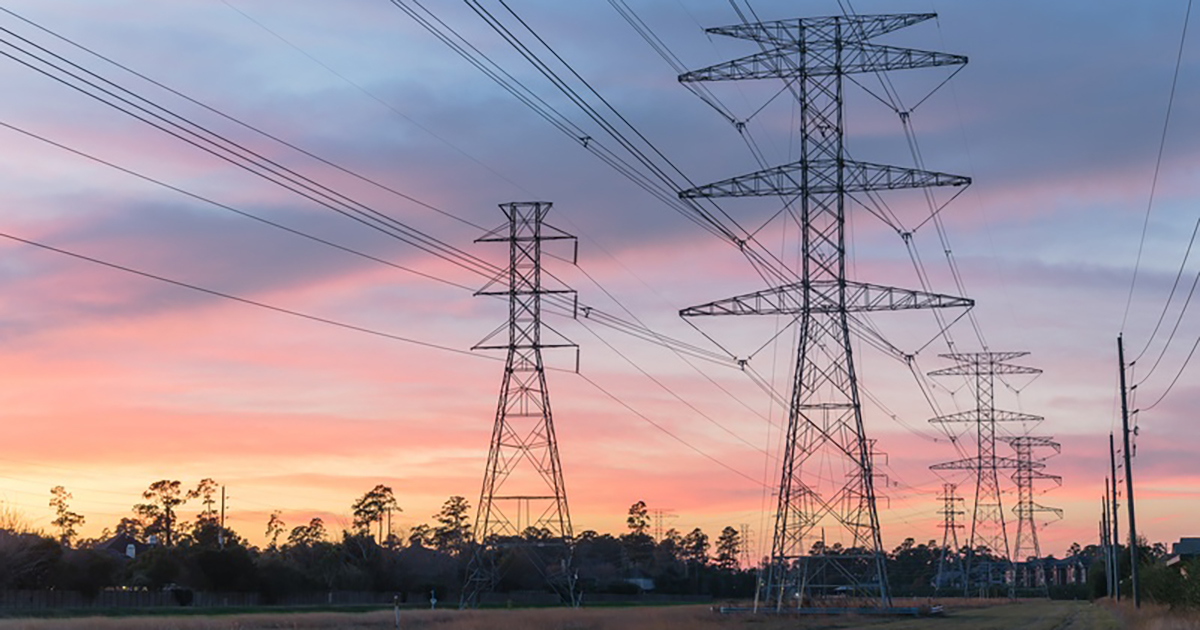A recent report by the Electric Reliability Council of Texas (ERCOT) indicates a wider cushion between supply and demand than previously expected for this summer because of the effects of the new coronavirus.
Meanwhile, the grid operator also finds an ongoing shift underway in the state’s power mix towards intermittent wind and solar and the possibility of record setting peak demand.
All of these elements could affect power prices this summer.
The threats seem to be coming from an ever-growing list of sources: wildfires, extreme cold, record floods, hurricanes, extreme storms, and cyberattacks. Fortunately, innovation and technology are keeping pace with the threats.
Increasingly, businesses, utilities, government agencies, hospitals, as well as universities and research organizations are installing microgrids to ensure that their electric power will continue to flow even if the surrounding grid goes down.
Green Mountain Power in Vermont recently announced plans to break ground this spring on a microgrid in Panton that will combine 4.9-MW of solar panels with a 1-MW/4-MWh battery storage system. The microgrid project is part of Green Mountain Power’s plan to create resiliency zones in towns that are affected by outages caused by severe weather.
On the other side of the country, Kaiser Permanente is building a microgrid at its hospital in Ontario that includes 2.2 MW of solar panels, a 1-MW fuel cell, and a 9-MWh battery.
One of the aims of the California hospital microgrid, as with the Vermont project, is to demonstrate that a microgrid can provide reliability without the need for fossil fuel generation.
In Chicago, Commonwealth Edison is building a microgrid in the city’s Bronzeville neighborhood that will include 5.5 MW of gas-fired generation, as well as 50 kW of solar panels and a 500-kW battery system. It is designed to provide low emission power if grid power suffers a disruption.
These projects represent just a small sample of the wide variety of microgrids being deployed today. And while they vary in many ways, including design, purpose and even size, they all share a common characteristic. Microgrids are designed to be self-sustaining with the ability to isolate or “island” from the surrounding grid during an emergency and return to synchronized grid operation after the emergency has passed. How any individual microgrid achieves that goal varies widely, however.
Microgrids come in a wide variety of configurations that allow them to be tailored to meet specific customer needs. One of the key defining characteristics of a microgrid’s design is the generation source it uses.
Meanwhile, the grid operator also finds an ongoing shift underway in the state’s power mix towards intermittent wind and solar and the possibility of record setting peak demand.
All of these elements could affect power prices this summer.
The threats seem to be coming from an ever-growing list of sources: wildfires, extreme cold, record floods, hurricanes, extreme storms, and cyberattacks. Fortunately, innovation and technology are keeping pace with the threats.
Increasingly, businesses, utilities, government agencies, hospitals, as well as universities and research organizations are installing microgrids to ensure that their electric power will continue to flow even if the surrounding grid goes down.
Green Mountain Power in Vermont recently announced plans to break ground this spring on a microgrid in Panton that will combine 4.9-MW of solar panels with a 1-MW/4-MWh battery storage system. The microgrid project is part of Green Mountain Power’s plan to create resiliency zones in towns that are affected by outages caused by severe weather.
On the other side of the country, Kaiser Permanente is building a microgrid at its hospital in Ontario that includes 2.2 MW of solar panels, a 1-MW fuel cell, and a 9-MWh battery.
One of the aims of the California hospital microgrid, as with the Vermont project, is to demonstrate that a microgrid can provide reliability without the need for fossil fuel generation.
In Chicago, Commonwealth Edison is building a microgrid in the city’s Bronzeville neighborhood that will include 5.5 MW of gas-fired generation, as well as 50 kW of solar panels and a 500-kW battery system. It is designed to provide low emission power if grid power suffers a disruption.
These projects represent just a small sample of the wide variety of microgrids being deployed today. And while they vary in many ways, including design, purpose and even size, they all share a common characteristic. Microgrids are designed to be self-sustaining with the ability to isolate or “island” from the surrounding grid during an emergency and return to synchronized grid operation after the emergency has passed. How any individual microgrid achieves that goal varies widely, however.
Microgrids come in a wide variety of configurations that allow them to be tailored to meet specific customer needs. One of the key defining characteristics of a microgrid’s design is the generation source it uses.
xx
Supply Buffer Up
ERCOT forecasts its cushion between supply and demand — its reserve margin — in its Seasonal Assessment of Resource Adequacy (SARA) for summer, a report that is carefully watched by the power industry because it offers a glimpse into how the market may perform during the hot summer months. The final SARA, issued in May, factored in the influence of curtailed economic activity from the pandemic, which increased the cushion by two percentage points over what ERCOT had forecast in March.
Changing reserve margin:
Changing reserve margin:
- 2020 Summer March estimate: 10.6 percent
- 2020 Summer May estimate 12.6 percent
xx
Peak Record Use Still Expected
Even if COVID-19 reduces demand this summer, ERCOT still expects to set a peak of 75,200 MW, breaking last August’s record.
It may seem counterintuitive that on the one hand the pandemic is dampening demand and on the other ERCOT predicts a record-setting peak. But it turns out that the dampening effects of the pandemic on electric use only partly offset the influx of people moving to Texas and the state’s growing economy, according to ERCOT.
In addition to population and economic growth, heat and wind play a major role in supply and demand in the summer. Extreme heat, low wind farm output and higher-than-normal power plant outages can conspire to reduce reserves. If they become critically low, the grid operator will declare Energy Emergency Alerts.
Meanwhile, industry observers are watching to see how residential air conditioning affects electricity demand, especially if Texas experiences any major heat waves. It’s still unclear how people working from home, and the shutdown or partial use of office buildings, may influence air conditioning use and affect electric demand.
It may seem counterintuitive that on the one hand the pandemic is dampening demand and on the other ERCOT predicts a record-setting peak. But it turns out that the dampening effects of the pandemic on electric use only partly offset the influx of people moving to Texas and the state’s growing economy, according to ERCOT.
In addition to population and economic growth, heat and wind play a major role in supply and demand in the summer. Extreme heat, low wind farm output and higher-than-normal power plant outages can conspire to reduce reserves. If they become critically low, the grid operator will declare Energy Emergency Alerts.
Meanwhile, industry observers are watching to see how residential air conditioning affects electricity demand, especially if Texas experiences any major heat waves. It’s still unclear how people working from home, and the shutdown or partial use of office buildings, may influence air conditioning use and affect electric demand.
xx
How Will Evolving Power Mix Affect Ercot?
ERCOT also is reporting a shift away from coal-fired generation to more and more wind and solar. As a result, ERCOT is increasingly relying on intermittent renewables to meet its peak demand.
It’s important to remember that not all wind and solar capacity can be counted on to meet demand. When doing its assessments, ERCOT gives solar a 76 percent summertime capacity rating, followed by a 63 percent rating for coastal wind, 29 percent for Panhandle wind and a 16 percent rating for wind in the rest of the state. As a result, the value of coastal wind in meeting demand is much higher than wind in the rest of ERCOT.
ERCOT’s growing solar fleet may complement the non-coastal wind farms, which tend to be more productive when solar generation is at its lowest.
It’s important to remember that not all wind and solar capacity can be counted on to meet demand. When doing its assessments, ERCOT gives solar a 76 percent summertime capacity rating, followed by a 63 percent rating for coastal wind, 29 percent for Panhandle wind and a 16 percent rating for wind in the rest of the state. As a result, the value of coastal wind in meeting demand is much higher than wind in the rest of ERCOT.
ERCOT’s growing solar fleet may complement the non-coastal wind farms, which tend to be more productive when solar generation is at its lowest.
xx
Covid, Weather & Prices
It’s impossible to predict what wholesale prices will be this summer, and the unknown effects of a COVID-19 economy make forecasts even harder.
One thing we know is that prices last summer rose to $9,000 per megawatt-hour driven by tight supplies during a heat wave and ERCOT’s revised formula for setting scarcity prices. The “operating reserve demand curve” mechanism, called the ORDC, increases prices when real-time electricity reserves grow short. At the direction of the Texas Public Utility Commission, ERCOT last year, and again this year, changed a key factor in the ORDC’s formula that makes it more likely the ORDC will be triggered as part of an effort to incentivize power companies to build generating facilities.
So, if conditions are right — meaning strong demand because of extended hot weather, low wind output, unexpected power plant or power line outages — it’s possible prices could head towards $9,000/MWh again.
Stay tuned for what could be another newsmaking summer for the Texas electricity market.
One thing we know is that prices last summer rose to $9,000 per megawatt-hour driven by tight supplies during a heat wave and ERCOT’s revised formula for setting scarcity prices. The “operating reserve demand curve” mechanism, called the ORDC, increases prices when real-time electricity reserves grow short. At the direction of the Texas Public Utility Commission, ERCOT last year, and again this year, changed a key factor in the ORDC’s formula that makes it more likely the ORDC will be triggered as part of an effort to incentivize power companies to build generating facilities.
So, if conditions are right — meaning strong demand because of extended hot weather, low wind output, unexpected power plant or power line outages — it’s possible prices could head towards $9,000/MWh again.
Stay tuned for what could be another newsmaking summer for the Texas electricity market.





